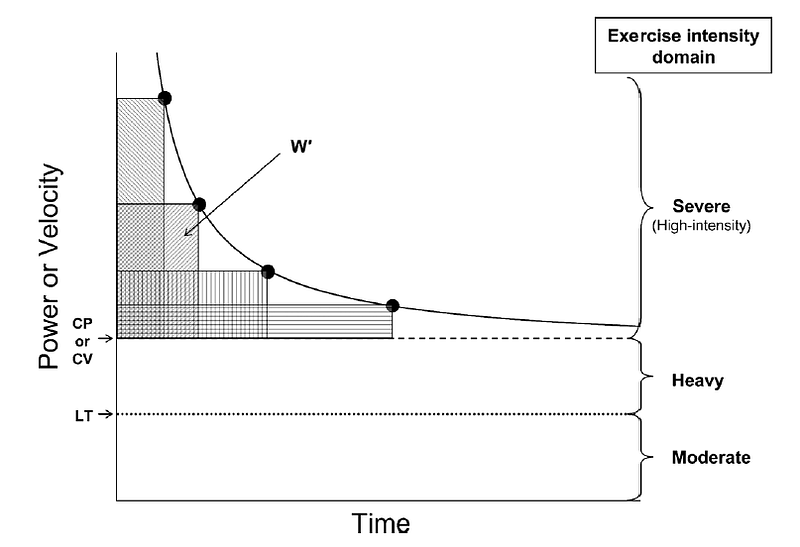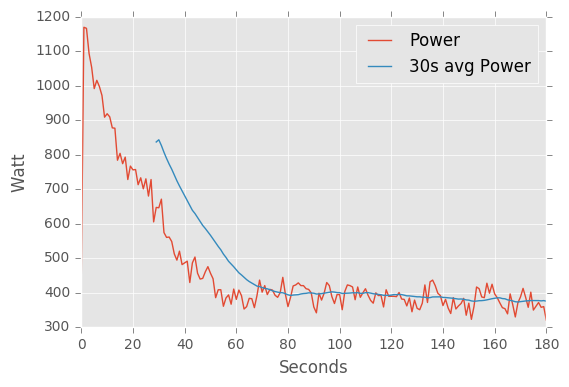Good point. Perhaps the definition of high intensity matches PCr depletion rate better. When I am all out effort, I can't go 20sec. Is the HI aspect really the same for both though? If HIIT doesn't allow HI to be reached because the short rest doesn't allow it, is it still HI? Is it more high effort or something along those lines? Are high intensity and high effort really synonymous?
Good question, and I'd say it depends on the specific activity.
When I jump rope I go for 20 seconds and don't think I could do but another couple seconds at that pace. I count my beats though, and I hit the same number of beats per repeat. The reduced recovery period (per other conversations about intensity vs volume) allows for a solid adaptive response within a shorter session, but by necessity the session
must be short.
When I cross this with my HR over 12 repeats, I get to about the 6th or 7th repeat and my HR recovery bounces around a 15-20 BPM high and low. It clearly is not recovering and neither am I fully clearing Pi, lactate, etc. My wind recovers and I'm on to the next. I'd imagine with a true Tabata your wind won't even recover, hence the even shorter number of repeats. But, I maintain the same number of beats over those 20 seconds from the first effort to the last. I was doing 15 repeats but it felt like those last three were just beating me up and I'd already gotten all the good I was going to get after a dozen.
Similar with my 25 minute metcons. I am definitely reaching a point where lack of recovery overlaps with larger segments of the working period. But, I maintain about the same working timeframe per repeat. Again, there is a limit to the number of repeats I can do, but that's included in the plan. With lessening intensity you need more volume - more repeats - to get a similar adaptive response. Unless the desired response is different anyway, I don't do metcons to improve raw strength.
Have done enough reading on HIIT to know that longer (>10 second efforts) and shorter rest periods generate the "best" classic HIIT response. As the rest periods increase you're getting into a different adaptive response and the increased mitochondrial/capillary density response becomes muted. Presumably you hit a different muscular endurance aspect, and therein is another real difference between the two.
When doing a full effort Iso I can go for about 20 seconds with legs, closer to 30 with upper body work. Probably more going on than just PCr depletion anytime you're using submax loading at high repeat though. I contrast HIIT, metcons, and HIRT with things like Mentzer single rep eccentric repeats with max loading - now
that qualifies as max PCr depletion in 10 seconds. I'm not sure that's really what we're after, as a serious depletion effort won't recover in any sort of reasonable timeframe - think powerlifting singles at nearly 100%RM.
Have to ID what response is desired and go from there.


